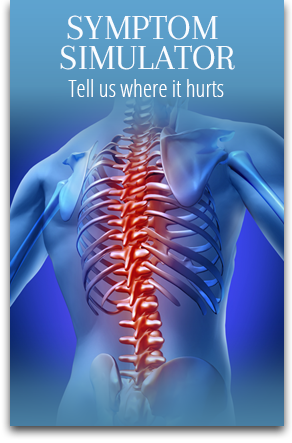Osteoporosis in Madison, OH
Osteoporosis is a debilitating condition that can affect people of all ages. The disease slowly takes a toll on movement while causing significant discomfort. Chiropractic care from French Chiropractic and Wellness Center in Madison helps with symptoms of osteoporosis experienced by the residents of Painesville, Mentor and surrounding communities in Ohio.
Osteoporosis: What Is It?
Many have heard the name of the disease, but few really know what it entails. Coming from the Greek words for “soft bones,” osteoporosis is a disease where otherwise durable bones become softened.
Normal bones have a durable outer structure that encases a soft inner structure that’s in the shape of a honeycomb — rather than being a hardened mass, the inner structure of bone actually has holes throughout. If the holes are enlarged, as they are in the case of osteoporosis, the entire bone structure is weakened, making the bones more susceptible to breakage in the event of a fall.
Because of the decreased bone mass and increased bone deterioration, osteoporosis sufferers are frequently in a lot of pain, especially if the disease is in the more severe, advanced stages. Fortunately, there are many ways to prevent the disease from progressing to the point of irreversible severity.
How Common Is Osteoporosis?
The facts and figures on osteoporosis are staggering and suggest that the disease is actually quite common. In the United States, Europe, and Japan, there are an estimated 75 million people who are diagnosed with the disease.
In the year 2000, there were an estimated 9 million fractures that were caused as a result of osteoporosis. The three most common fractures occurred in the forearm (1.7 million), hip (1.6 million) and vertebrae (backbones — 1.4 million). More than half of these fractures (51%) occurred in the USA and Europe.
Unbelievably, there is an equal — and sometimes greater — risk of being diagnosed with osteoporosis than to being diagnosed with cancer. For men, the lifetime risk of experiencing an osteoporosis fracture is nearly the same as being diagnosed with prostate cancer (approximately 30%). For women, the numbers are even more dramatic: it is estimated that a woman has a 1 in 9 risk of being diagnosed with breast cancer over the course of her lifetime, but she has a 1 in 6 risk of experiencing a hip fracture related to osteoporosis.
In total, up to 50% of women — and up to 30% of men — will suffer an osteoporosis-related fracture in their lifetime. Those who have previously had an osteoporosis fracture are up to 86% more likely to suffer an additional fracture in their lifetime, but more than 80% of those people who previously suffered an osteoporosis fracture will neither be identified nor treated for the condition.
For these reasons, and many more, regular screening for osteoporosis is important.
Signs And Symptoms of Osteoporosis
For many people, an osteoporosis diagnosis doesn’t come until it’s too late. Because you can’t feel your bones getting weaker, you won’t realize that you have the disease until you break a bone. You don’t have to do anything major in order to experience a bone fracture due to osteoporosis: sometimes, something as simple as a forceful sneeze can lead to a fracture.
For women, menopause is not just a transition into a new phase of life: within 5 to 7 years after menopause, a woman is susceptible to losing up to 20% of her bone mass, making her more at risk for osteoporosis than before menopause.
In the case of spinal (vertebrae) fractures, they can sometimes go undiagnosed, or misdiagnosed as something else. The most common misdiagnoses of osteoporosis include spinal deformity (kyphosis, Dowager’s hump, stooped posture).
Sometimes, the fractures are so slight that they go undetected and are only diagnosed (along with osteoporosis) after an x-ray is performed.
Osteoporosis Risk Factors
While this is by no means a conclusive list of osteoporosis risk factors, the following yes/no quiz can easily determine if you are at risk of developing osteoporosis. The more questions you answer in the affirmative, the greater your risk of developing the disease:
- Are you a woman?
- Are you of advanced age?
- Do you have a family history of osteoporosis?
- Are you small and/or thin? (Studies have determined that the smaller you were in infancy, the greater your risk of developing osteoporosis)
- Are you White/Non-Hispanic, Latino, and/or Asian? (These ethnic groups are at a greater risk of developing osteoporosis than other ethnic groups; this does not mean, however, that other groups are not at risk)
- Do you have a history of broken bones?
- Do you smoke? (Your chances of developing the disease increase if you’re a regular smoker)
- Do you drink alcohol? (Those who drink more than four units of alcohol a day are at greater risk of developing osteoporosis than non-drinkers)
- Are you on a prescription regimen for corticosteroid drugs? (Extensive use of these drugs — most commonly prescribed to asthma sufferers — is the leading cause of secondary osteoporosis) Other prescription regimens that put you at risk of developing the disease include anticonvulsants (commonly prescribed to those who suffer from epilepsy).
- Is your diet low in calcium and Vitamin D? Is your diet high in caffeine, alcohol, salt, and protein? (These two factors will greatly increase your osteoporosis risk)
- Do you have a sedentary lifestyle? Do you suffer from impaired neurological and muscular function?
- Do you have hormonal deficiencies? (The most common hormonal deficiencies that contribute to osteoporosis include low estrogen (in women), low testosterone (in men), and pituitary issues.)
- Do you currently, or have you suffered, from Anorexia Nervosa or another eating disorder?
- Do you suffer from rheumatoid arthritis?
- Do you suffer from gastrointestinal issues that lead to a problem with nutrient absorption, such as Celiac Disease, Crohn’s Disease, or general gluten sensitivity/intolerance?
Fractures and Osteoporosis
Hip Fractures
A hip fracture is the most common — and, unfortunately, the most deadly — type of fracture that results from osteoporosis. Such a fracture can lead to increased convalescence, pneumonia, deep vein thrombosis (DVT) and even death (if not treated properly or caught in time).
Within the first year of receiving a hip fracture, up to 24% of patients will die, as a result. That high risk of death persists for up to five years after the initial fracture took place. More than 40% of people who receive a hip fracture report that they are subsequently incapable of walking on their own. More than 60% of people who receive a hip fracture report that they continue to need assistance for more than a year after the initial fracture took place. And, in the years following a hip fracture, one-third of people report that they are confined to a nursing home as a result of their injury.
Women over 50 are at the greatest risk, statistically, of getting a hip fracture: almost 75% of such fractures occur in women of that age group and older. Of those women, 2.8% of them are at risk of death from such a fracture — the same percentage as those at risk of dying from breast cancer, and four times greater than those at risk of dying from endometrial cancer.
Vertebral Fractures
Five percent of men and 16 percent of women are at risk of developing a vertebral fracture in their lifetime. And while a woman over the age of 65 has a 1-in-4 risk of developing a second vertebral fracture after receiving her first one, her risk will decrease to 1-in-8 if she receives appropriate treatment.
A vertebral fracture can lead to decreased lung function, back pain & deformity, and loss of height and mobility. Such symptoms will inevitably lead to a decrease in function of daily life, as well as a huge loss of self-esteem, and even clinical depression.
Unfortunately, however, many vertebral fracture commonly go undiagnosed: only one-third of vertebral fractures are reported and subsequently treated. And, the after-effects of the vertebral fracture are equally frightening: a vertebral fracture will lead to an increase in fractures, both vertebral and non-vertebral, in osteoporosis sufferers.
Diagnosis of Osteoporosis
Bone Mineral Density (BMD) Scans will measure your bone density. Another common diagnostic tool is the use of a DEXA Scan (dual energy x-ray absorptiometry) combined with laser technology. This pain-free scan will provide you with a T-score, which effectively calculates your risk of developing a fracture in the future.
Bear in mind that while different tests will measure density in different parts of your body — such as the heel or the wrist — no test is 100% accurate.
How Chiropractic Care Can Help Treat Osteoporosis
A chiropractor will help you with your osteoporosis diagnosis by offering you techniques that increase your range of motion, decompress spinal fracture sites, alleviate the pain of the disease, offer relaxation and rehabilitation, and even provides you with some dietary and nutritional techniques.
By providing you with these services, a chiropractor will provide a non-surgical and hands-on approach to treatment, which will help you prevent future falls and fractures.
Isn’t it time you tried chiropractic care for you and your family? If you are experiencing any of the common symptoms of osteoporosis, please contact our office now to schedule an appointment.







